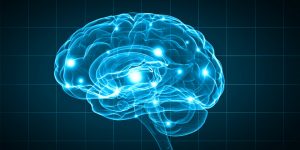- Home
- Up to XII Students
- Decide Stream For XI & XII
- Career Options
- Entrance Preparation
- Sample Papers
- Entrance Exams after 12th
- International Entrance Exams To Study Abroad
- Foreign University Comparison
- Apply to Foreign Universities
- General Preparation For Students Going To Study Abroad
- Write A Report
- Write an Article
- Write An Essay
- Important Dates
- UG & PG
- Tech Tips
- Mock Test
- GROOMING
- HOBBIES
- K PLUS
- Working Professional
- OTHERS
Neural Plasticity
Aditya Prasad Padhy
Faculty Member: Department of Electrical Engineering
The adolescence period is the most sensitive phase of life and is often ambiguous for its dramatic neural and psychological changes. It encompasses vigorous puberty hormones that affect emotional, behavioural, and experiential independence between the ages of 12 years to 19 years which influence neural transition. The complex neural transition initiates from the genetic blueprint and synaptic synchronization of neurons where memories reside.
Although, development of human neural schema and its functionality begins from the pre-natal phase; the neurons system tends to stabilize slowly with the biological development of infants. The reorganization of neurons reduces as we tend to reach the adolescence period, but doesn’t cease the process of adaption. During adolescence, the brain deals with some sensitive phases such as self-consciousness, social isolation, interpersonal violence, peer pressure, and other puberty issues. Indeed, neuro-anatomical alteration occurs due to changes in hormones and the social surroundings of that individual. The experience from the internal and external surroundings plays an important role in brain rewiring.

Environmental stimuli exert profound consequences on neural connectivity. However, such stimuli are dependent on the visual experience of one’s social and emotional background. The outcome of neuro-anatomical alteration in the cortical brain influences the frequent behavioural changes in adolescents. This morphological and functional neural alternation gives rise to
plasticity or technically termed as “Neural Plasticity” (NP). The concept of NP was highlighted to discuss brain maturation and memorization by Hubel and Wiesel in 1967 where they emphasize inherent stimuli and period of experience for the cognitive development of the cortical brain. According to several studies, there is a thin barrier between visual experience and NP. The visual experience started at the earliest post-natal phase as volatile memories. Brain Maturation and NP are complementary but associated with the specified region of the brain exposing the highest synapses which are responsible for the neuro-anatomical reorganization of the synaptic network related to independent aspects. Apart from the earlier generalized discoveries in neurogenesis, NP underscores predominately in cognitive learning accomplishing the competencies. As the learning process tends to ignite by the age of 3, plasticity has been implemented through an auditory training program to children and especially to the auditor.
References
- M. Cooper, F. Vargha-Khadem, D. G. Gadian, and E. A. Maguire, “The effect of hippocampal damage in children on recalling the past and imagining new experiences,” Neuropsychologia, vol. 49, pp. 1843-1850, 2011.
- T. Borrello, B. Schinner, K. Bartels, H. Benelkebir, S. Pereira, W. T. Al-Jamal, et al., “Fluorinated tranylcypromine analogs as inhibitors of lysine-specific demethylase 1 (LSD1, KDM1A),” Bioorganic & Medicinal Chemistry Letters, vol. 27, pp. 2099-2101, 2017.
Like this article?

Kalinga Plus is an initiative by Kalinga University, Raipur. The main objective of this to disseminate knowledge and guide students & working professionals.
This platform will guide pre – post university level students.
Pre University Level – IX –XII grade students when they decide streams and choose their career
Post University level – when A student joins corporate & needs to handle the workplace challenges effectively.
We are hopeful that you will find lot of knowledgeable & interesting information here.
Happy surfing!!
- →
-
Free Counseling!
